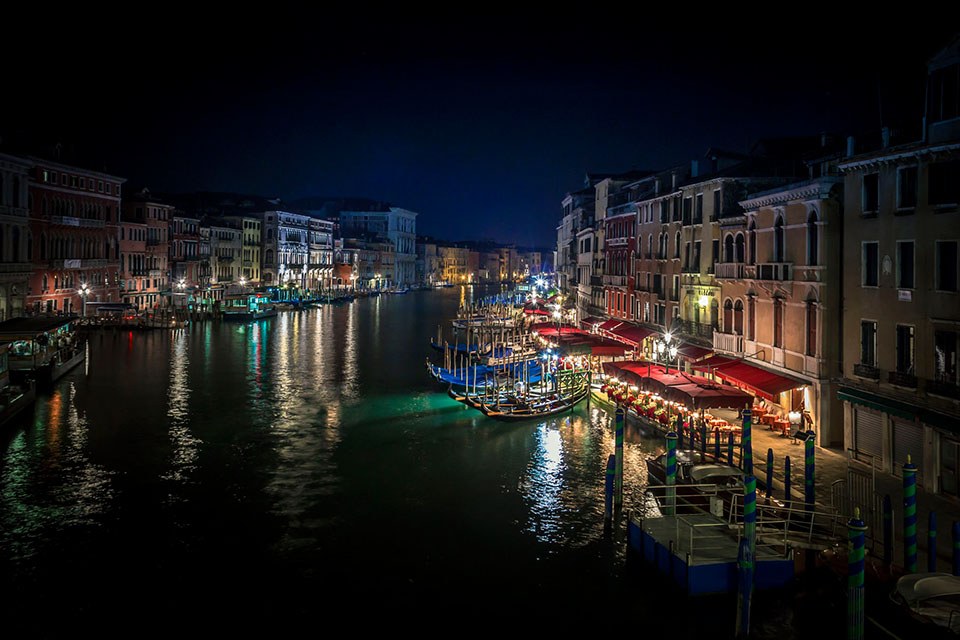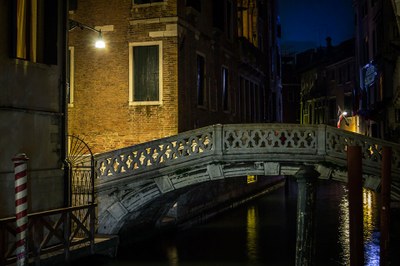Venice Achieves Milestone in Energy Efficency While Maintaining Beauty and Character of Historic Luminaires
All along the canal-ways and on the grounds of the famous Piazza San Marco in Venice, Italy, vintage luminaires have been upgraded to LED lighting to reduce energy usage by over 80 percent while maintaining the look and feel of a bygone era.
Venice is a city for lovers. An evening spent traveling along the Canal Grande or strolling through the spacious Piazza San Marco is typically enhanced by a warm glow from antique luminaries -- which project light on the captivating waterways and stunning architecture found everywhere the eye can see. So when it came time to upgrade to a more energy-efficient lighting solution, Venetians and historians including the Commission for the Architectural and Landscape Heritage got involved to see to it that the exact lighting quality in all of Venice be preserved.
Litek, the Italian provider of lighting fixtures that was commissioned for its “Custom Service” division, decided to use Philips Lumileds LEDs within the fixtures after 4 years of testing.
“After hard tests on site, we determined that Philips Lumileds LEDs were the right choice for this project—not only for their LED capabilities, but to preserve the unique light and wonder of Venice,” says Fabio Facchini, CEO at Litek. In partnering with Philips Lumileds, LITEK was able to deliver LED lighting that was 80% more efficient, yet maintained the light quality (lumen output and color temperature) of the previous mercury discharge lamp technology. Other key reasons partnership included Philips Lumileds’ strong reputation, ability to co-deliver a reliable product and strong technical support.
Throughout Venice, a total of 7,000 luminaries were retrofitted with LED lighting solutions. In addition to realizing an energy savings of 81.4 percent and the accompanying reduction in CO2 emissions, the lumen maintenance lifetime of the LED fixtures is expected to be 50,000 hours or 5X longer than the mercury discharge lamp technology. On average, the lights are illuminated for 11 hours per day or 4,200 hours per year. The light quality has been precisely replicated, but with greater reliability and dramatically improved efficiency.
Piazza San Marco:
Simply referred to as the piazza, the Piazza San Marco was designed for people, and indeed has functioned as a social, political, and religious center of Venice for centuries. This vast public space in the heart of Venice assumed its present form during the Renaissance. “In the evenings or at night, one’s perception of the notable architectural structures in the piazza, including the Basilica de San Marco, the Torre dell’Orologio [Clock Tower] and the Palazzo Ducale, is keenly affected by the lighting,” says Mark van den Berg, Director of Marketing at Philips Lumileds. For this reason, it became necessary to maintain the exact light quality that was delivered by the mercury discharge lamps of the past, when they were replaced by energy-efficient LED lamps.”
On the piazza, post-top luminaries were fitted with LUXEON K high-lumen-density arrays due to their high efficiency, ease of use and low maintenance, in addition to customized optics, specifically designed by Litek. Though the initial consultation on the project began as early as 2008, installation was rapid once it started in January 2013 with all fixtures changed out by the end of April 2013. In Venice, about 6,000 post-top luminaries were changed out to warm white (3000K correlated color temperature, CCT) LEDs with a CRI of 80.
Canal Grande, Accademia Bridge, Rialto:
The banks of the Canal Grande are flanked by 170 buildings that date back from the 13th to the 18th century. The canal forms a major corridor through the city, spanning over 3,800 meters and 30-90 meters wide, and is traveled by gondola, water bus or water taxi. Along the Canal Grande, across the Accademia Bridge and in the Rialto shopping area, a second type of luminaire has been used in the past, which also utilized halogen bulbs. The retrofit LED luminaries incorporate LUXEON M high-flux-density emitters that have been optimized for high efficiency and consistent color point.
When the project was completed, over 1,000 luminaries in these areas had been retrofit with LED emitters. A CCT of 3000K was used with a CRI of 80.
City-wide Results:
According to the local utility, the overall lighting replacement project realized a reduction of 75 kW of power annually. The 7,000 light fixtures, which are now LED based, consume 81.4 percent less energy than they did previously.






